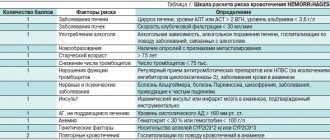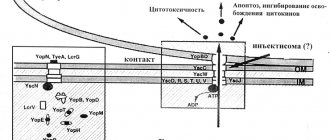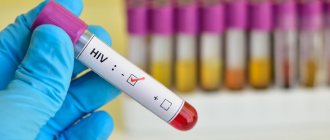Cri-cat syndrome, also called Lejeune's syndrome, is a fairly rare chromosomal disease characterized by a defect in the structure of the fifth chromosome. With this chromosomal defect, various severe malformations of internal organs and tissues are noted. Children with cry-the-cat syndrome very often suffer from complications that arise from a defect in the fifth chromosome.
According to statistics, cry-the-cat syndrome is not a very common chromosomal pathology. Thus, this disease occurs in 1 child in 30-60 thousand newborns. At the same time, the occurrence of Lejeune syndrome does not depend on the region or climatic conditions. However, it has been noted that female gender is a risk factor.
Compared to most other hereditary pathologies, cry-the-cat syndrome has a relatively favorable prognosis. With this pathology, children can live to adulthood with appropriate medical care and avoiding the development of serious complications. However, people with this disease cannot lead a normal life without physical and mental disabilities.
Interesting information about the syndrome:
- Cri-cat syndrome was originally discovered and described in the mid-twentieth century by geneticist Jerome Lejeune, after whom the syndrome was named.
- This pathological condition has specific symptoms by which it can be diagnosed in newly born children.
- This syndrome is distinguished by a specific cry of a child (high-pitched and very loud), which resembles the meowing of a cat. With this disease, there is a defect in the development of laryngeal cartilages.
- With Lejeune syndrome, patients have a normal amount of chromosomal material, which distinguishes it from other genetic pathologies. There is only a slight deficiency of the fifth chromosome, which is the cause of the disease.
Causes of Cry Cat Syndrome
Lejeune syndrome is a chromosomal disorder. The leading cause of Cry Cat Syndrome is a change in the structure of chromosomes in the child's genetic information. The genome contains all the information about an organism. The genome consists of 23 pairs of chromosomes. Chromosomal diseases occur due to a violation of the integrity of any of the chromosomes.
Cri-cat syndrome is characterized by the fact that in the genome, every fifth chromosome will have a defect in any cell, regardless of its function. With this pathology, the fifth chromosome does not have a short arm on which a large number of genes are localized. In genetics, this pathological condition is called a deletion (the absence of a certain section of DNA).
There are several variants of mutations that are factors in the development of the syndrome:
- Absolute absence of a short arm on the fifth chromosome. This option is typical for a very severe course of the disease.
- A reduction in the short arm is characterized by the loss of certain gene information. With this form, there is a loss of gene information, which leads to the appearance of this syndrome.
- The mosaic version of Lejeune's syndrome is a relatively mild course of the disease (less pronounced physical and mental abnormalities). In this form of the disease, the genome initially changes its structure during the growth of the embryo. During the division of the fifth chromosome, the short arm was lost, which was the cause of the disease.
Cry-cat syndrome, a mutation of which is located on the fifth chromosome, is observed in all of the above deviations. In this case, specific symptoms are noted that are the result of the division of cells that have a defective gene. The division of such cells is characterized by less intensity, since they lack the necessary chemical components. As a result, children with Cri-Cat Syndrome often have low body weight.
As a rule, a defect in the fifth chromosome is inherited from one of the parents. The main cause of Cry Cat Syndrome is not clear, since the development of this pathology is due to many environmental factors. These factors lead to disruption of the zygote division process at the very beginning of pregnancy or damage to the germ cells of one of the parents.
Factors that provoke the development of pathology of the fifth chromosome:
- The age of the woman who is the mother of the child. The likelihood of hereditary diseases increases with maternal age. For the syndrome, this dependence is quite weak. With this pathology, the risk of developing the disease increases after 45 years in the mother. However, the age of the father does not affect the risk of developing Lejeune syndrome;
- Smoking. Smoking is especially dangerous at a young age, when the reproductive system is actively developing. This is a common cause of chromosomal pathology;
- Alcohol acts in the same way as smoking (there is a disruption of biochemical processes, which significantly increases the risk of chromosomal abnormalities); Some medications negatively affect the reproductive organs, including chromosome mutation. This is especially true for taking medications in the first trimester of pregnancy. This contributes to the development of the risk of the mosaic form of Lejeune syndrome. At the same time, narcotic substances are the most teratogenic;
- Cry of the cat syndrome, a mutation in which can be observed in the presence of intrauterine infections;
- Radioactive radiation directed at the genitals often manifests itself as chromosomal mutations;
- Unfavorable environmental conditions. Scientists note that in regions where toxic minerals are mined, the birth of children with chromosomal diseases is often observed.
The cause of Cri-Cat Syndrome often lies in one of these factors, but there are cases where parents who were not affected by the above factors give birth to children with Cri-Cat Syndrome.
Causes of monosomy
Monosomy can occur at various stages of cell division. For example, with Shereshevsky-Turner syndrome, the process of X chromosome divergence is disrupted. As a result, one woman’s egg gets two X chromosomes, and the second gets none. During the fertilization process, the zygote receives a set of X0 and Y0, - instead of the normal XX or XY.
The causes of monosomy are not related to hereditary factors. Violations occur when exposed to unfavorable factors. Bad habits, radiation, some medications, chemicals, unfavorable environmental conditions, harmful working conditions, etc. can affect reproductive cells.
Appearance of newborns with cry-the-cat syndrome
Scientists have identified a set of symptoms and syndromes that are collectively characteristic of cry-the-cat syndrome. These symptom complexes can be seen immediately after the birth of the child. Typical symptoms of the disease that are observed immediately after the birth of the baby:
- Specific cry of a newborn baby.
- Anomalies in the development of the skull bones.
- A certain shape of the palpebral fissures.
- Atypical shape of ear cartilage.
- Agenesis of the lower jaw.
- Low birth weight.
- Anomalies in the development of the bone apparatus of the hand.
- Clubfoot.
Cry cat syndrome is constantly manifested by the specific crying of a child. A defect of the fifth chromosome is clinically manifested in the first minutes after the birth of a child with a characteristic cry in the form of a cat’s meow. This cry differs in tone from the cry of normal children. The reason for this is:
- Reduction in the size of the epiglottis cartilage;
- Reducing the lumen of the airways in the projection of the epiglottis;
- Abnormal increase in the elasticity of cartilage tissue;
- Formation of folds in the mucous membrane that lines the cartilage of the larynx.
Since these changes occur in the area of the vocal cords, the tone of the voice in children changes.
Anomalies of head development
Children with cry-the-cat syndrome in more than 80% of cases have abnormalities in the development of the shape of the skull. Most often, microcephaly is observed, which is accompanied by a decrease in the size of the skull. Therefore, in newborns, the head has an oblong shape and is proportionally smaller than the size of the body. In order to confirm the diagnosis of microcephaly, it is necessary to do craniometry. Microcephaly is always accompanied by encephalopathy of varying severity.
Specific shape of palpebral fissures
This symptom is characteristic of many chromosomal diseases, including Lejeune syndrome. This anomaly is mainly due to the pathological shape of the skull bones. Children with Cri-Cat Syndrome have eye developmental disorders that can be distinguished by four characteristics:
- The antimongoloid ocular section is distinguished by the fact that the medial corner of the eye is always located above the outer one;
- Strabismus is characterized by an asymmetrical arrangement of the corneas in relation to the eyelids;
- Hypertelorism of the eyes is characterized by a wide setting of the eyeballs;
- The epicanthus is a fold at the inner corner of the eye.
Deformation of the outer ear
Newborns with cry-the-cat syndrome are characterized by changes in the structure and location of the ears. The most common pathology is ptosis of the ears. This is a consequence of underdevelopment of ear cartilage, which is visually represented by a decrease in the size of the ears. Also, peculiar compacted skin nodules may be observed on the skin near the ears.
Agenesis of the lower jaw
Underdevelopment of the lower jaw is manifested by micrognathia or microgenia. During pregnancy, due to chromosomal abnormalities, the bone that forms the lower jaw may not reach the desired size. All this leads to retraction of the chin in relation to the maxillary bone. Frequent forms of micrognathia are bilateral or unilateral. In general, impaired development of the lower jaw in such children leads to difficulty in feeding (the child cannot completely close his lips near the nipple, which leads to a disruption of the sucking reflex).
Pathologically low child weight
Newborn babies with Cri-Cri-Cat Syndrome often have an abnormally low birth weight. This is a consequence of severe developmental disorders of internal organs.
Pathology of bone development of the skeletal apparatus
Cry-cat syndrome often manifests itself as the development of syndactyly. This syndrome is characterized by fusion of a child's fingers and toes. In this case, it is possible to connect the fingers only with a thin membrane of skin, which can be easily corrected with surgical intervention. In case of fusion of fingers with bone tissue, it is much more difficult to correct this pathology.
Clindactyly may also be observed, which is characterized by a violation of the shape of the fingers in the joints of the hand and foot.
Clubfoot
This symptom manifests itself in the presence of anomalies in the development of the bone apparatus of the lower limb. Clubfoot is a violation of the position of the foot in relation to the axis of the leg. In the future, such children may have problems with walking. The combination of these symptoms can be diagnosed at the prenatal stage.
Features of children with cry-the-cat syndrome
The survival rate of children with this syndrome is quite high, so many of them reach adolescence. Children with cry-the-cat syndrome have the following phenotypic features of appearance:
- Mental retardation;
- Decreased muscle tone;
- Reduced coordination of movements;
- Constipation;
- Moon-shaped face;
- Shortened neck;
- Labile nervous system;
- Deterioration of vision.
Mental retardation
Often this symptom becomes noticeable in the first years of a child’s life and is one of the important diagnostic signs of this disease against the background of complete health.
Decreased muscle tone
This symptom develops with pathology of the nervous system or defective development of certain muscles. Clinically, this is noticeable in the form of increased fatigue in children while walking.
Reduced coordination of movements
This manifestation of cry the cat syndrome develops with underdevelopment of the cerebellum, since such children have microcephaly.
Constipation
This symptom is observed due to a pathologically narrowed gastrointestinal tract, as well as due to a violation of the neurohumoral regulation of the intestine.
Moon shaped face
This symptom occurs as a result of impaired development of the skull bones and dolichocephaly. In this case, the bones of the facial part of the skull are larger than the brain.
Shortened neck
With this symptom, it is difficult for children to turn their heads in different directions. This occurs as a result of underdevelopment of the cervical vertebrae and the cartilage between them.
Lability of the nervous system
Such children often change their mood without any justifiable reason. This is a consequence of underdevelopment of the nervous system. Often such children show increased aggressiveness and activity in children's groups.
Deterioration of vision
This symptomatology occurs due to impaired development of the organ of vision.
Shereshevsky-Turner syndrome
It is a consequence of monosomy on chromosome X. Affected children are often born premature or have reduced body weight. One of the classic signs of Shereshevsky-Turner syndrome, which can be noticed immediately after birth, is a pronounced skin fold on the neck. Other clinical manifestations include:
- heart defects;
- swelling of the upper and lower extremities;
- impaired lymph circulation;
- delayed speech and physical development.
As the child grows, characteristic features of the body structure appear. Height usually does not exceed 150 cm, wing-shaped folds on the neck are preserved, the ears may be deformed, the upper jaw is underdeveloped, and the chest is wide. Monosomy on chromosome X affects the development of reproductive organs. In women, there is a lack of follicles in the ovaries, menstrual irregularities, and underdevelopment of the mammary glands. In men, testosterone levels decrease and one or both testicles may be absent or underdeveloped.
The prognosis for Shereshevsky-Turner syndrome is relatively favorable. In the absence of severe developmental defects and regular monitoring by a specialist, life expectancy is not reduced.
Diagnosis of Cry Cat Syndrome
Diagnosis of any chromosomal abnormality is carried out in two stages. The first stage is to identify women who have an increased risk of developing children with chromosomal abnormalities. The second stage is carried out to confirm a specific disease. Thus, all pregnant women need prenatal diagnosis, which is a set of diagnostic studies at the prenatal stage. Thanks to these measures, genetic abnormalities are identified at an early stage, among which is Cry the Cat Syndrome.
Cry-cat syndrome includes the following diagnostic methods:
- Anamnestic data;
- Karyotyping of both parents;
- Ultrasonography;
- Blood test to identify plasma markers;
- Invasive research methods;
- Study at the postpartum stage.
Detailed history taking
A detailed survey of parents by a pediatrician or geneticist.
Karyotyping of parents
If there is an increased risk of developing a chromosomal abnormality, the doctor prescribes this study, which allows you to fully study the structure of the cell and its nucleus.
Ultrasound
Frequent nonspecific signs of cry-the-cat syndrome on ultrasound:
- Increased collar space;
- Increased or decreased amount of amniotic fluid;
- Anomalies of heart development;
- Brachycephaly or dolichocephaly;
- Intestinal obstruction;
- Short tubular bones.
A blood test for plasma markers includes the following studies:
- Determination of hCG;
- Detection of protein A level;
- Determination of estriol concentration;
- Determination of alpha-fetoprotein.
Diagnosis of the disease
To prevent Lejeune's syndrome at the stage of pregnancy planning, future parents can get advice from a geneticist. This is important when there are cases of genetic diseases in the family. If a specialist believes that the risk of having a sick child in the family is high, each partner undergoes a karyotype analysis. Blood is taken from a vein and cells containing chromosomes are isolated. The normal karyotype of women is 46 XX, men - 46 XY.
When studying a karyotype under a microscope, the chromosome set of a person is studied
Karyotyping indicates the risk of having a sick child, but even in case of normal results it does not exclude chromosomal defects of the fetus. After pregnancy, the expectant mother undergoes three screenings to identify diseases of the fetus in utero.
Screening is a comprehensive examination of pregnant women. The first is carried out at 11–13 weeks, the second at 16–20 weeks, the third after the thirtieth week. The first two studies include fetal ultrasound and blood tests, the third only ultrasound.
Table: prenatal tests to identify genetic abnormalities
| Research | Characteristic | What results may indicate chromosomal diseases | |
| Mandatory (screening) - make it possible to assume a genetic abnormality of the fetus, but do not determine its type | Fetal ultrasound | Using ultrasound, the doctor obtains an image of the fetus. The study is harmless, so it is carried out at any period. Gives you the opportunity to study:
| Signs of chromosomal mutations can be:
|
| Blood test for hCG (human chorionic gonadotropin) | A hormone necessary for pregnancy. Its amount is maximum in the ninth week, then decreases. Examined during the first and second screening. Normal range is 50,000–120,000 mIU/ml and 15,000–60,000 mIU/ml | Increased hormone levels | |
| Blood for PAPP-A (plasma protein A) | PAPP-A is a protein that appears in large quantities during pregnancy. The analysis is carried out during the first screening. Normal - 0.79–6.01 mU/l | Decreased levels, especially in combination with elevated hCG | |
| Free blood estriol | A hormone indicating the condition of the placenta. Examined during the second screening. Normal - 1.17–3.8 ng/ml | Indicators may be below normal | |
| AFP (alpha fetoprotein) blood | A protein produced in the fetal digestive system. Normal - 15–27 U/ml | Very low rate | |
| Additional (according to indications) - allow you to verify the presence of a genetic anomaly, determine the cat cry syndrome before the birth of the child | Non-invasive prenatal DNA test Panorama | Informative after the ninth week. They examine the venous blood of a pregnant woman and identify freely circulating cells with fetal DNA fragments in it. | |
| Chorionic villus biopsy | Conducted at 8–12 weeks. The mother's anterior abdominal wall is punctured and cells from the villous part of the chorion (outer membrane of the fetus) are taken for examination to determine the chromosome set | ||
| Amniocentesis | After the 18th week, amniotic fluid, which contains fetal cells, is taken for examination using the puncture method. | ||
| Cordocentesis | For genetic research, blood is taken from the umbilical cord by puncture. Conducted from the 17th to the 34th week | ||
Prenatal detection of cry-the-cat syndrome is important in order to determine the initial amount of medical care required for the baby by the time of birth.
Invasive methods (chorionic villus biopsy, amniocentesis, cordocentesis) are used when absolutely necessary, since the risk of miscarriage after such studies is 1%
If a newborn is suspected of having cry-the-cat syndrome based on external signs, its karyotype is examined. The results obtained confirm or refute the diagnosis.
From the first days of life, the child undergoes examinations (ultrasound of internal organs, brain, ECG, biochemical, clinical tests, etc.). Diagnostics allows:
- determine the volume and severity of pathologies;
- draw up a treatment plan;
- make a life forecast.









